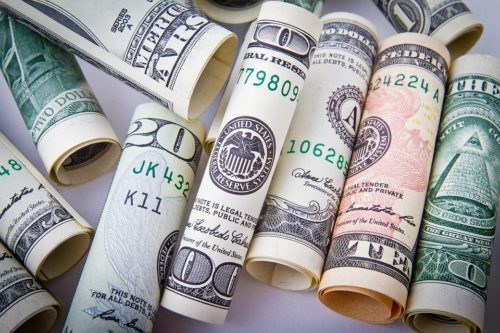Did you know that if pollution and consumption patterns remain the same, 40 percent of the world will lack access to clean water in 15 years? The earth is expected to contain 3.5 billion more people by 2050, but with no water, we won’t be able to feed them. This means if you have aspirations of settling down and starting a family, that life choice might have just become a lot more complicated. I suggest that every one of us starts making moves towards investing in our environmental and financial future — right now.
Am I Paying for Climate Change?
Here’s the deal: the government has already started budgeting your money according to environmental need. However, it’s increasing year over year because the state of our environment is exponentially getting worse. We mentioned in another article that millennials are expected to pay over $8.8 trillion in damage costs due to climate change over our lifetime. If you weren’t aware, these are the types of things you pay state and federal taxes for. The world has started to change right before our very eyes, and we’re literally dipping into our own pockets to try and fix it. You can expect to pay an estimated $126,000 over the course of your lifetime. That’s enough to buy a house and/or knock a huge chunk out of your retirement fund, but instead we’re being forced to pay for the effects of climate change.
Should I Budget for “Green” Purchases?
What can I do about the financial impact climate change is having on my savings? Well, we all understand that we can’t stop climate change overnight. It didn’t happen overnight either. It’s going to take some serious action and time to hopefully positively impact our budgets and curb the current effects on the environment.
The bottom line is, you need to start including environmentally sound purchases into your budget. This means small purchases all the way up to large investments. When you make purchases, it’s important that you understand the environmental impact your dollars are having on the world. Are you spending your money on products that are going to help or hurt our generation and those that come after us? Not all environmentally friendly products are going to cost you more money. So, when we talk about “budgeting” for green purchases, it’s more about increasing your awareness of where you money goes. It’s important to be cognizant of the companies you are supporting and the industries that you are helping to grow.
Now is the time to examine your “carbon footprint,” as they say. Do you know your impact on the environment? Most people understand the impact they’ve had on their wallet if they use too much power or electricity because they are charged more on their monthly utility bill. In addition, most people know that it is wasteful to use too much water or power. This parallels the conversation we should be having about climate change. However, many of the largest impacts to our world aren’t quite so obvious. Sometimes it’s much harder to see a direct cause and effect with many other daily purchases and choices that we make. These choices still do have an extreme impact on the environment — we just can’t always see it with our eyes.
How Do My Purchases Affect the Environment?
For example, one of the largest industries in the world, is the meat and dairy industry. Water usage, food usage, and methane emissions coming from animal agriculture are having a profound impact of the environment. In fact, 30 percent of all emissions can be attributed to the livestock industry. That accounts for the 18 percent that is directly related to livestock production. In addition the remaining 12 percent comes from the support of this industry — the production of food for the sole purpose of feeding livestock. The meat and dairy industry surpasses all of our transportation emissions combined, which means you can make an enormous impact to the environment simply by choosing what you eat. I understand that most Americans aren’t quite ready to make any huge changes to their diet. However, knowing the impact it has on the world will hopefully give you some additional perspective. Even if you were to simply lessen your consumption of meat and dairy, you’d still be making a necessary change for the betterment of the world.
Our dependence on fossil fuels is also negatively impacting the environment in a big way. As such, choosing alternative modes of transportation are still extremely important. About 15 percent of all global emissions can be attributed to the transportation industry. I highly suggest that you take a look at your current transportation plan and evaluate whether a car is necessary. If so, choosing a fuel efficient car or an electric car might be a much better choice due to their impact on your wallet and the environment.
These are the kinds of things you should be thinking about everyday when you’re making choices about where you want to spend your money. It’s extremely easy to overlook something as small as the food we eat, which is actually making one of the largest (if not the largest) impact on climate change. So, if you’re reading this wondering what kind of changes you can start making that will actually have a direct impact on climate change, here’s where to start.
Sadly, this is a debt that all of us have taken on and it’s not negotiable. We’re already paying (literally) for the effects of climate change. Doesn’t it make sense that we’d choose to put our money into areas that will do their best to reverse their impact? Let’s take back our money and our environment.
Image Source: https://pixabay.com/





